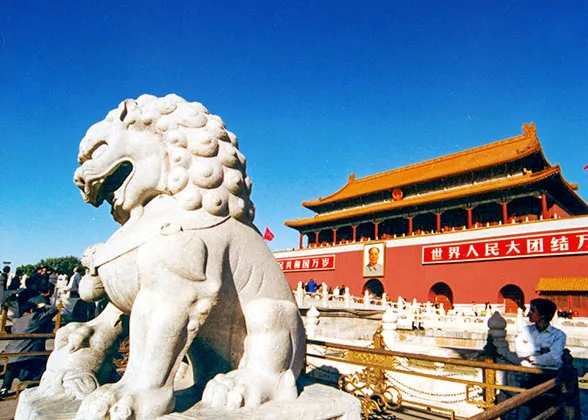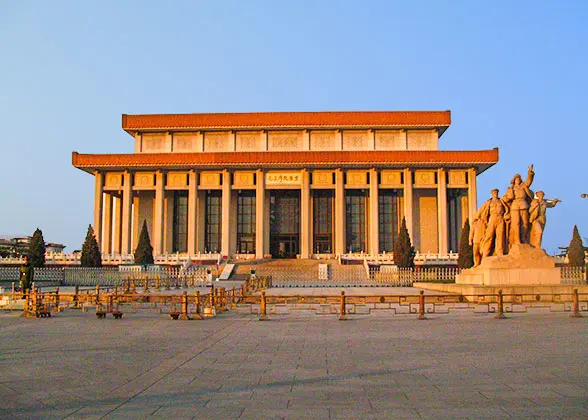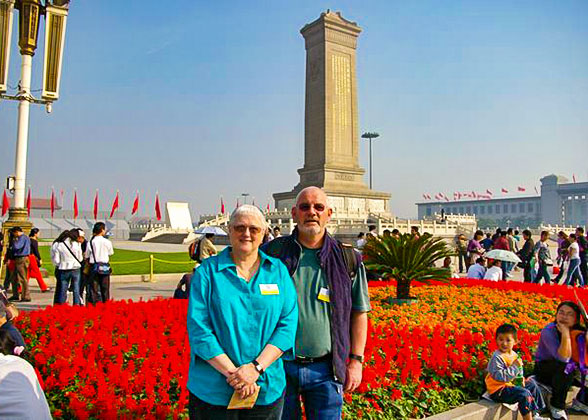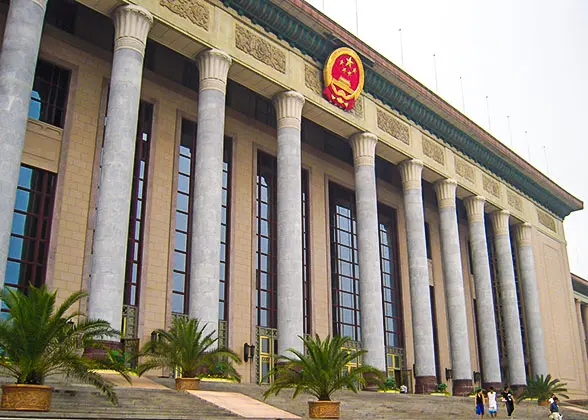National Museum of China
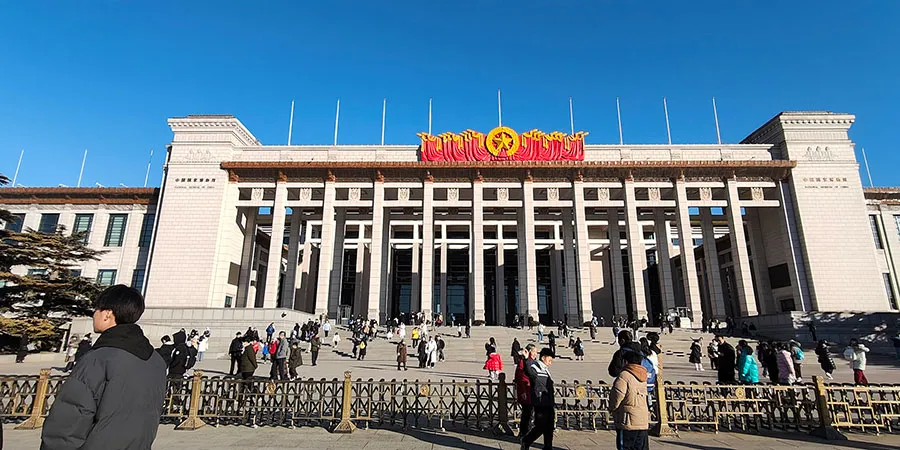 |
History of National Museum of China
The Museum of the Chinese Revolution grew out of the Preparatory Office of Central Revolution Museum that came into existence in March, 1950. The Preparatory Office was set in Circular City (Tuancheng) of Beihai Park at the beginning and moved to the Hall of Martial Valor of the Forbidden City before long. In October, 1958, a new building took shape to the east of Tiananmen Square. August, 1959 saw the completion of the building. August of the next year was the time when the Museum of the Chinese Revolution was presented and the Preparatory Office was eliminated. Its official opening was on July 1st, 1961.
In September, 1969, the Museum of Chinese History and the Museum of the Chinese Revolution were combined as the Revolution and History Museum of China. Later they went back to their separate buildings in the early years of the 1980s. On February, 28, 2003, the museum was inaugurated.
It was closed again for renovation and rebuilding in 2007 and reopened on March 1, 2011. The new one is two times larger than the previous one. The exhibition themed the Road to Rejuvenation once inaugurated in celebration of the 60th birthday of the PRC in 2009 is the first display in the new National Museum of China. The northern exhibition area was unveiled firstly to the public.
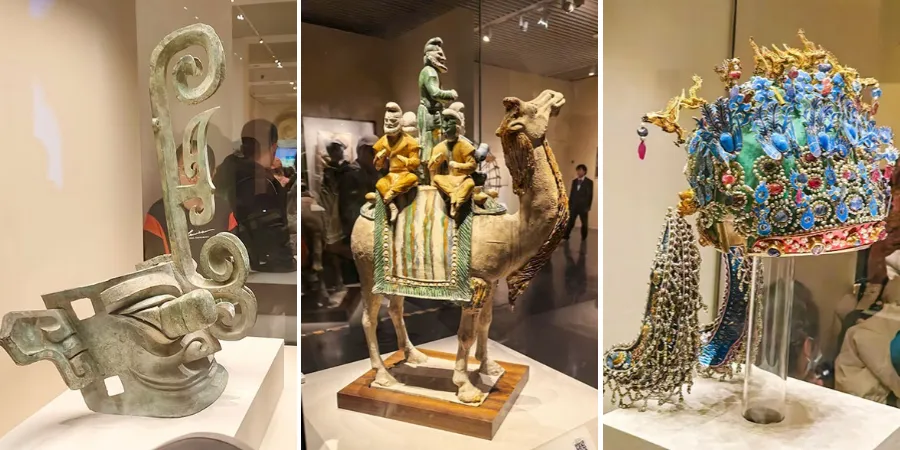 |
Main Exhibits and Facilities
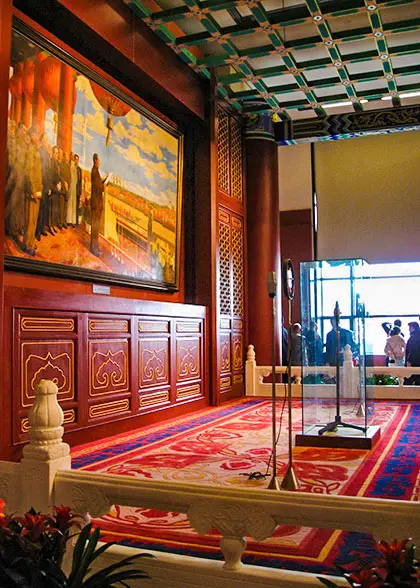 |
| Picture of Founding Ceremony of People's Republic of China |
After renovation and expansion, National Museum of China has in total 48 exhibition halls, ranging from 800-2,000 square meters (960-2,400 square yards). Ancient China and the Road to Rejuvenation are the main basic exhibitions to show nearly 3,000 historic materials from Yuanmou Man about 1,700,000 years ago to the abdication of the Qing Emperor in 1912 in ten exhibition halls, and modern and contemporary revolutionary relics since the First Opium War (or the First Anglo-Chinese War) in 1840 in nine exhibitions halls, mirroring more than 100 years development of China from 1840 to the founding of the PRC in 1949.
National Museum of China is devoted to display of treasured collections in form of various thematic exhibitions, such as the Arts of bronze, porcelain, jade, Chinese calligraphy and paintings, Buddhist statues, Ming & Qing furniture, coins, etc in ancient China; to display feature culture relics, significant archeological discoveries and ethnic culture and folk customs in the form of exchanges and cooperation with local museums; to display different civilizations and artistic creations in the world in the form of loan and exchange exhibitions. There are temporary exhibition halls to display modern art.
New buildings of National Museum of China during the latest renovation project include several banquet rooms respectively decorated with wood, brick, bronze and stone carvings. In order to provide a variety of services, the new National Museum has shops offering tea, coffee, souvenirs, as well as an auditorium and a 700-seat theater.
Top Treasures
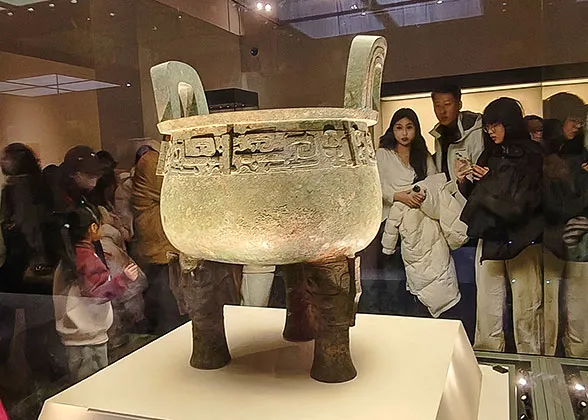 |
| Bronze Tripod, National Museum |
Permanent and Regular Exhibitions
![]() Visitors are not allowed to take selfie sticks and tripods for the safety of the exhibits in the museum. Those who already take the above-mentioned equipment are required to deposit their equipment before entering. Meanwhile, flash photography is also prohibited in the museum.
Visitors are not allowed to take selfie sticks and tripods for the safety of the exhibits in the museum. Those who already take the above-mentioned equipment are required to deposit their equipment before entering. Meanwhile, flash photography is also prohibited in the museum.
How to get to National Museum of China
1. Take Bus 1, 2, 52, 59, 82, 120, Sightseeing Bus Line 2, or Tourist Bus Line 2 to Tiananmen East;
2. Take Bus 8, 9, 20, 44, 622, or Te 2 to Qianmen East; and then walk north for 10 minutes to the National Museum of China.
By Subway:
1. Take Subway Line 1 to Tiananmen East, the museum is to the south;
2. Take Subway Line 2 to Qianmen, the museum is to the north.
Beijing Bus / Subway Search
| Ticket Price | Free for basic exhibitions and permanent galleries; visitors need to pay for some special exhibitions. Notes: 3,000 visitors permitted every day, including 2/3 group visitors and 1/3 individual visitors. |
|---|---|
| Open Hours | 9:00 to 17:00, closed on Monday (Tickets issued until 15:30; Last entry at 16:00) |
| Reservation | Call 010-65116400 for group reservation (9:00-16:00) Individual visitors can go to the museum's ticket center at the West Entrance, showing thier passport for an admission ticket. |
